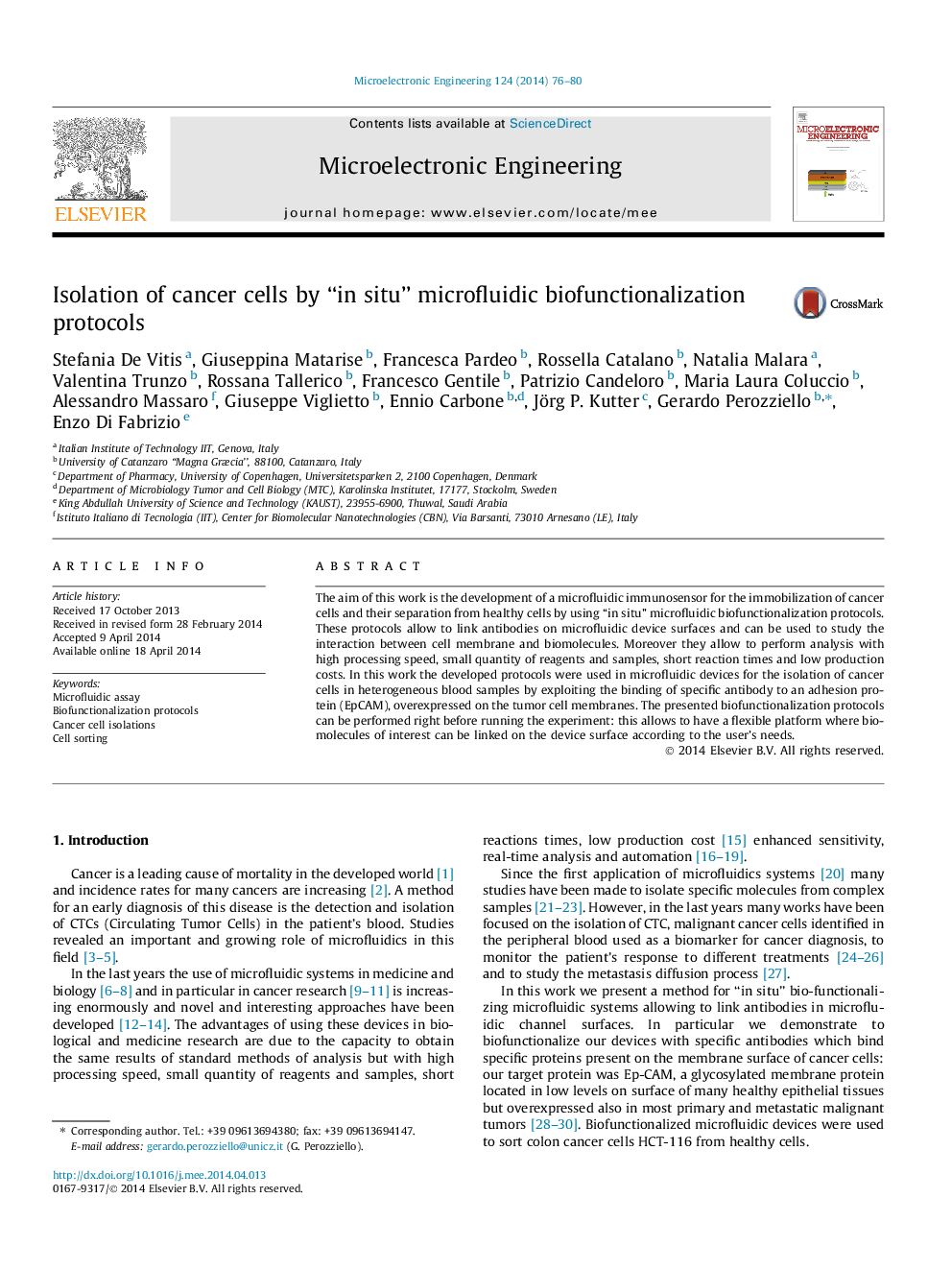| Article ID | Journal | Published Year | Pages | File Type |
|---|---|---|---|---|
| 544216 | Microelectronic Engineering | 2014 | 5 Pages |
•A microfluidic device was realized to identificate and immobilize cancer cells on biofunctionalized surfaces.•The developed protocols could be used for the immobilization of cancer cells in heterogeneous samples of cells.•The devices can be biofunctionalized right before the experiments when the chip is already assembled.•The method could led to the realization of new devices for cancer’s diagnostics in real time.
The aim of this work is the development of a microfluidic immunosensor for the immobilization of cancer cells and their separation from healthy cells by using “in situ” microfluidic biofunctionalization protocols. These protocols allow to link antibodies on microfluidic device surfaces and can be used to study the interaction between cell membrane and biomolecules. Moreover they allow to perform analysis with high processing speed, small quantity of reagents and samples, short reaction times and low production costs. In this work the developed protocols were used in microfluidic devices for the isolation of cancer cells in heterogeneous blood samples by exploiting the binding of specific antibody to an adhesion protein (EpCAM), overexpressed on the tumor cell membranes. The presented biofunctionalization protocols can be performed right before running the experiment: this allows to have a flexible platform where biomolecules of interest can be linked on the device surface according to the user’s needs.
Graphical abstractFigure optionsDownload full-size imageDownload as PowerPoint slide
